From pauperess to princess ... Cinderella’s two-thousand year metamorphosis
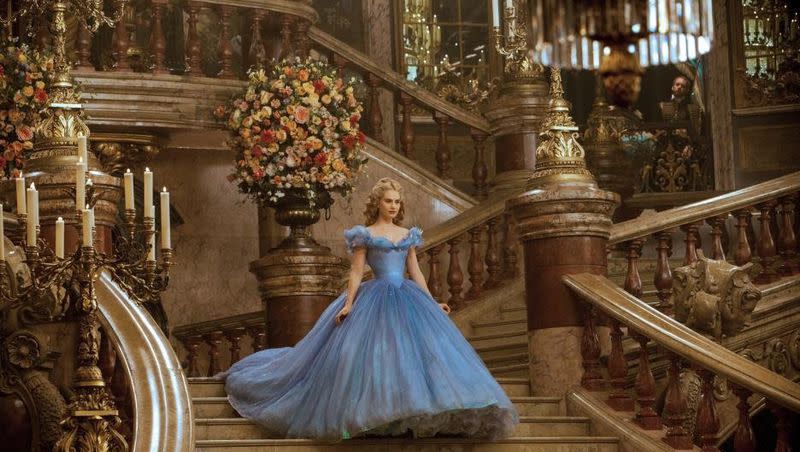
- Oops!Something went wrong.Please try again later.
Editor’s note: This story was originally published on May 15, 2023. It has been updated.
In modern American culture, one of the most popular fairy tales remains Cinderella.
There are dozens of adaptations like “Ella Enchanted,” “Cendrillon” and “A Cinderella Story,” which have made the pauperess turned princess famous.
From its ancient origins to modern adaptations, the story has changed, expanded and developed into the well-known iconic story which persists today.
Here’s a look back on how the French folk tale transformed into an iconic, classic cinematic franchise. She’s become a pop culture icon. Growing up, on the days where I didn’t want to be Belle, I wanted to be Cinderella. Her sweeping, sparkling blue dress, her beauty and her kindness inspired me, just like she’s inspired millions of girls and women everywhere.
Related
Origin of the Cinderella story
Once upon a time, Greek geographer Strabo recorded an old Egyptian tale about a Greek woman named Rhodopis. An eagle snatched up her sandal and flew with it from Naucratis to Memphis. An investigation for her scandal launched as suitors scattered around searching for it. The one who found it married her.
Other ancient writers referenced this tale, which some consider one of the origins of the Cinderella story. Fairy tales and folk tales are transmitted orally and there are often variations of them across different cultures because they speak to universal themes.
This is true of other folk-tales, too, like Snow White. Folklorist Maria Tatar looked at the global phenomenon of the Snow White story. In her book “The Fairest of Them All,” Tatar compiled 21 variations of the Snow White story, which at its core is about a beautiful girl and her jealous and cruel stepmother.
Like other fairy tales, the Brothers Grimm pushed Cinderella into the forefront. The tale was originally rather gruesome, but Walt Disney transformed it into a classic movie.
In turn, Cinderella became the icon she is, blue dress and all. But it wasn’t the only story about Cinderella.
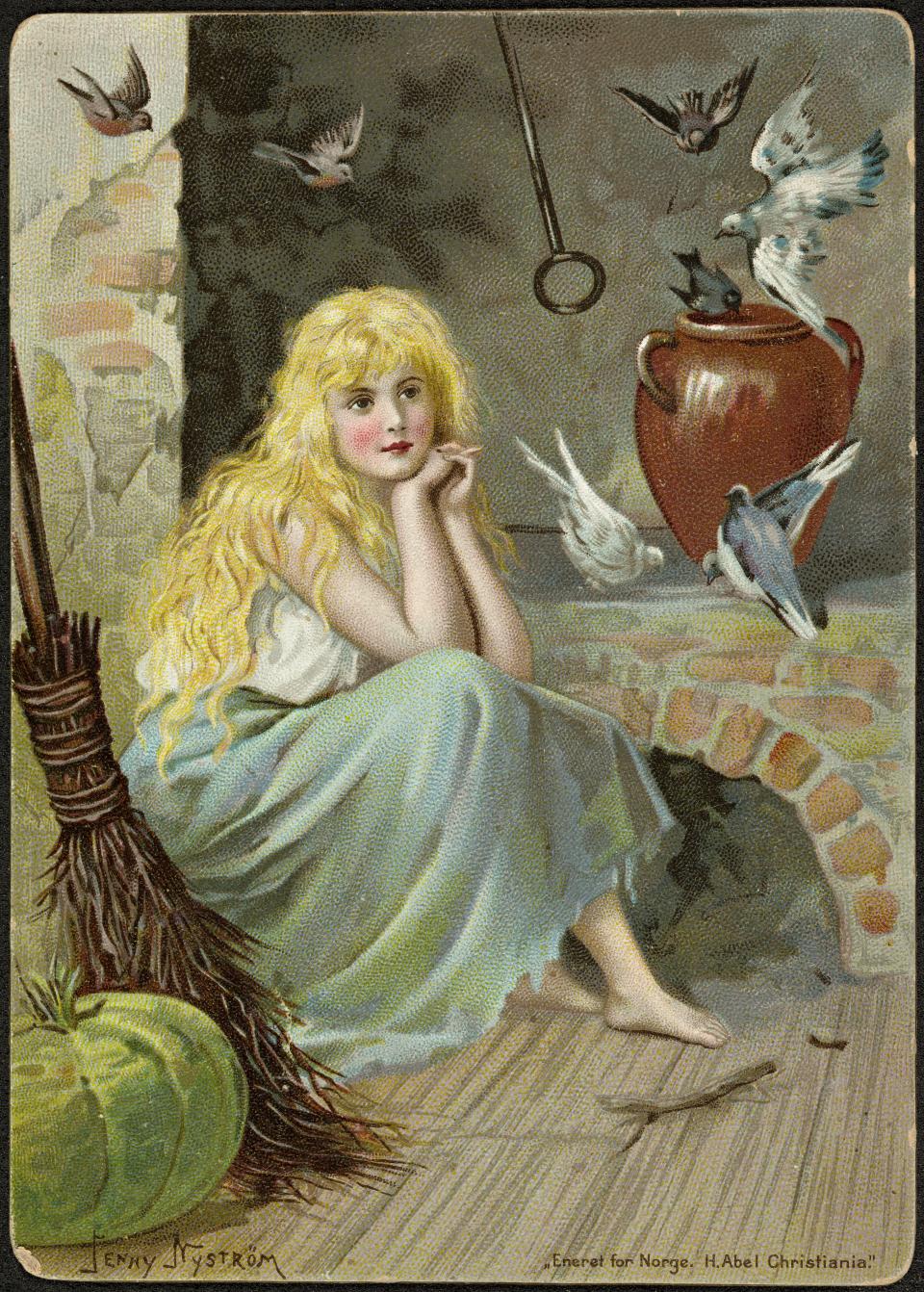
The story of Cinderella is a universal one. Just like how when Cinderella (2015) came out, many mother and daughter pairs went to see it in theaters together, the story has had similar broad appeal stretching several generations back.
J.R.R. Tolkien in “On Fairy Stories” summed up this idea, “It is plain enough that fairy-stories (in wider or in narrower sense) are very ancient indeed. Related things appear in very early records; and they are found universally, wherever there is language.” While, as Tolkien points out, Cinderella has a prominent connection to French culture, it functions in the way he describes — as an ancient, universal story.
As it’s a universal story, there have been other early versions of the story. There was a ninth-century Chinese tale, “Ye Xian,” in which the eponymic character is granted a wish that she uses to try to find a husband. As Kelsey McKinney for Vox puts it, “A monarch comes in possession of the shoe (this time, the shoes have a gold fish-scale pattern) and goes on a quest to find the woman whose tiny feet will fit the shoe. Ye Xian’s beauty convinces the king to marry her, and the mean stepmother is crushed by stones in her cave home.”
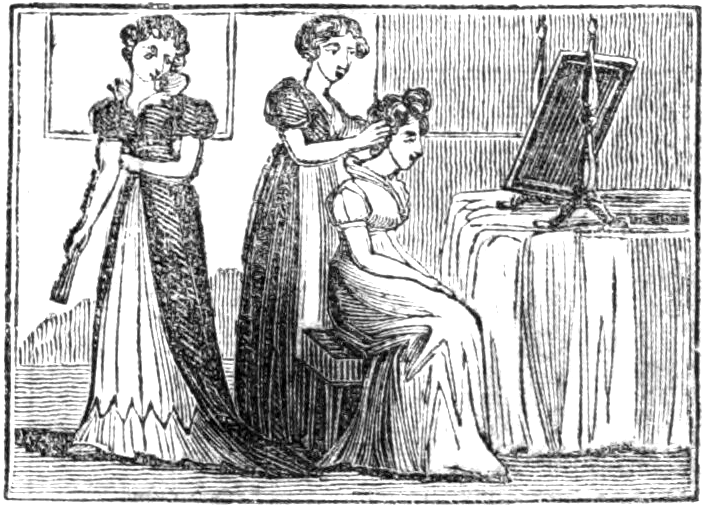
There were versions from Japan like Chūjō-hime, who ran away from her evil stepmother and became a Buddhist nun, or a Korean version of the tale (the story of Kongji), according to New World Encyclopedia. In 1634, there was an Italian version called “La Gatta Cenerentola,” or “The Hearth Cat,” by Giambattista Basile. It was from this version that the most popular Cinderella tale began to emerge.
Charles Perrault and Grimm Brothers’ ‘Cinderella’
The version that the modern story of Cinderella is most commonly traced to is “Cendrillon,” which was published in 1697 by French author Charles Perrault. NPR said this version “brings together many of the elements popularized by the 1950 Disney cartoon: the fairy godmother, the transformed pumpkin, the glass slipper, the midnight spell.” It’s the version that the modern story of Cinderella is most commonly traced to.
There was another version of the Cinderella story which was published in 1812 by the Brothers Grimm, also known as Jacob and Wilhelm Grimm. This version has some recognizable elements, like the birds helping her as she transforms into a beautiful princess, the stepsisters and a prince.
Her dress and shows are gold.
This version is also more gruesome than other versions. Birds attack the stepsisters as a punishment and the sisters take desperate measures to put their feet in the shoes. Unlike the magical beauty of the Disney movies, there’s blood and gore.
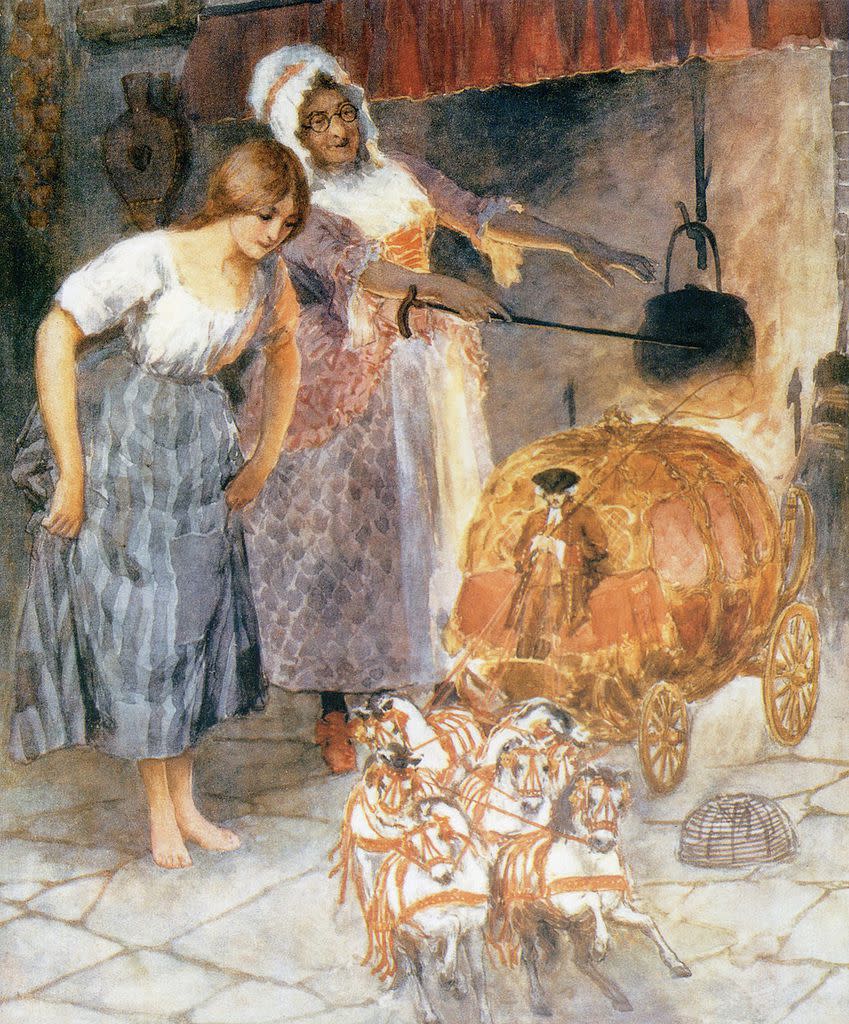
The Brothers Grimm version departs from Perrault in a couple of key ways. For one, Cinderella has slippers made out of gold in the former, while the latter describes her slippers as glass. Perrault wrote, “Her godmother then touched her with her wand, and, at the same instant, her clothes turned into cloth of gold and silver, all beset with jewels. This done, she gave her a pair of glass slippers, the prettiest in the whole world.”
On the other hand, Madame d’Aulnoy’s version, which was published in 1697 — same year as Perrault — describes her slippers as velvet. So, Cinderella’s slippers have been different materials throughout adaptations. Nevertheless, it’s the glass slippers which come to define Cinderella.
Cinderella became a popular tale to adapt to ballet and opera. Several different adaptations emerged from the late 1700s onward, per New World Encyclopedia. Some of them included Jean-Louis Laruette’s 1749 “Cendrillon” or Gustv Holst’s 1901-1902 “Cinderella.”
The Cinderella story became embedded in culture, but especially when Walt Disney took on the project of adapting it to animated film.
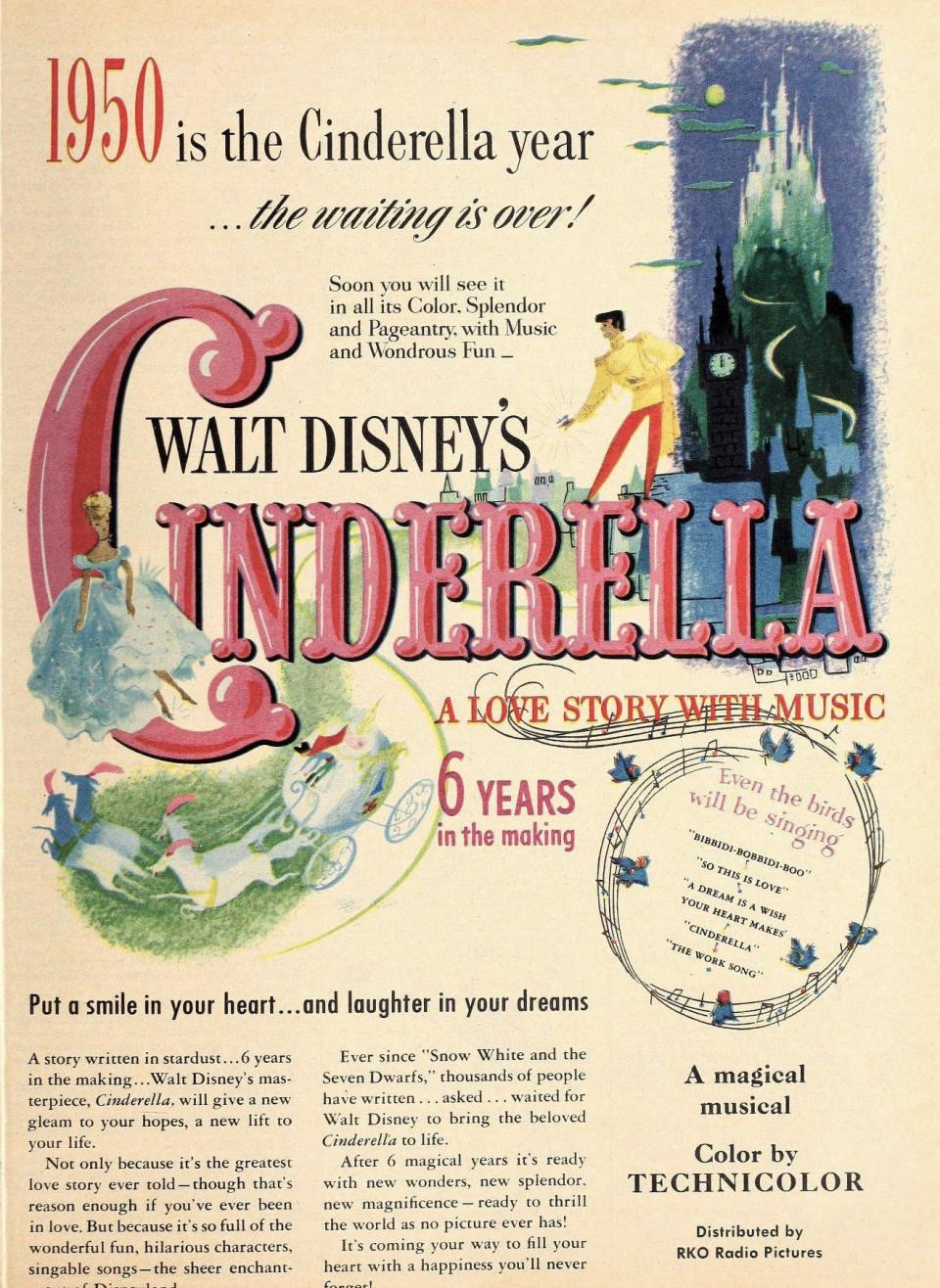
Why do we love princess tales?
Princess tales have archetypes of different princesses with the ability for girls and women to connect to them. Lottie Johnson reported on a study for Deseret News that broke down components of what girls love about princesses.
The categories were royalists, dreamers and girls. In other words, some girls connect to the royal lifestyle of beautiful dresses and crowns. Others resonate with the romance and adventure of princess tales. And others are empowered by seeing princesses encounter opposition and succeed.
Beyond these broad categories being apparent in princess tales, there are other components of them that are universal. Dorio Sato observed how folk-tales have a universal message about human nature or experience “that is so fundamental to human existence that it is true for all people of all time periods and cultures.”
Take the Snow White tale, for instance. Tatar showed how a version of this tale existed across different cultures with universal elements such as the relationship between a daughter and stepmother/mother, the experience of violence and romance as a type of rescue or escape from difficult circumstances.
The Cinderella story has some of those common elements: difficult relationship between daughter and stepmother/mother, dreaming of leaving tough circumstances, the hope of romance and the victory of the protagonist.
One of the ways the Cinderella story resonated with me was especially shown in the 2015 Disney adaptation. She does don the dress and the slippers, gets her hair done up and has a magical evening, but it’s not defining.
Cinderella fully embraces the experience, but her values of kindness and inner beauty are expressed as her defining attributes. The show doesn’t reject the value and fun of dressing up and feeling beauty — it emphasizes the core parts of her in addition to appreciating those kinds of experience.
In other words, Cinderella taught me to feel beautiful, but also to see kindness as a primary attribute of beauty.
What is the true Cinderella story?
Once upon a time, there was a beautiful girl whose mother passed away. Her father remarried a jealous woman with two daughters. Seeing that the girl was more beautiful and good than her own daughters, her stepmother forced her to do the worst chores and didn’t show her warmth or love.
The girl was eventually nicknamed Cinderella because she would warm up by the fireplace full of ashes. As she endured this mistreatment, a bachelor prince announced a ball and Cinderella prepared her stepsisters for the ball, and longed to go herself.
She lost hope when she saw them leave and then, a fairy godmother appeared and transformed ordinary objects into a pumpkin carriage with footmen, a beautiful gown and glass slippers. She went to the ball and danced with the prince but had to run away at the stroke of midnight, otherwise all the godmother had transformed would return to its original state.
Cinderella slipped away and had to leave behind one of her glass slippers.
The prince began her quest to find whose foot would fit the slipper. The stepsisters tried desperately, but to no avail. Eventually, the prince found Cinderella and saw the slipper fit. The two married and as the story goes, they lived happily ever after.
What is Cinderella’s full name?
It depends on the story. Omaha World Herald said there’s many different versions of Cinderella and her name isn’t always given or it’s not consistent. In some versions of the story, her name is Ella and she’s nicknamed Cinderella because she warms up by the dying fire after a hard day of work.
What does the glass slipper symbolize?
The glass slippers may have actually been intended as a joke. Genevieve Warwick, professor of history of art, said to The Guardian the glass slipper was “a witty joke” and it was a “literary mascot of French economic modernity.”
Warwick further explained Perrault’s reference to glass slippers could have been in relation to the opulence of the French monarchy.
What’s the purpose of the Cinderella tale?
The Cinderella tale offers a commentary on economic classes.
In the tale, Cinderella is born to a wealthy family. For one reason or another, she’s left alone with her stepmother and even though she was born into the upper-middle class, she becomes destitute. Throughout the tale, she works hard and eventually, her hard work is rewarded while the stepsisters are left wanting.
It’s both a sympathetic and aspirational story — one that particularly resonates with Americans perhaps because of the concept of the American dream. “Americans have idealized stories such as those of Horatio Alger and the self made man making it ironic that Cinderella stores have gained such popular as Cinderella deals with a noble, middle class, or upper class female who has lost her riches and must reclaim her proper standing in the world,” Kristen Friedman wrote in a University of Albany paper.
While Cinderella isn’t self-made in the traditional sense, a similar theme runs throughout her story, which may account for some of her popularity. The universality of Cinderella’s class mobility have the potential to resonate with many different readers.
It’s also part of princess culture.
Growing up, it wasn’t uncommon to have conversations about which Disney princesses my friends and I identified with — Cinderella was a popular choice.
Cinderella’s transformation into a beautiful princess wearing an elegant dress is one that resonates with some women and girls in their own journeys of finding personal style and beauty.
Disney’s 1950 ‘Cinderella’
The first full-length Disney princess movie was “Snow White and the Seven Dwarfs,” which was released in 1937 — although Snow White technically wasn’t the first Disney princess, per Smithsonian Magazine. Persephone from Greek mythology debuted in a short earlier that same year. Thirteen years after “Snow White,” Disney released “Cinderella.”
Adapted from Perrault’s fairy tale, the 1950 “Cinderella” introduced the iconic Cinderella character known today. She was voiced by Ilene Woods and the character was transformed in the film from wearing a tattered pink dress to the iconic silvery blue sweeping ball gown — complete with her hair in a bun, bangs and a matching headband — that she is known for today.
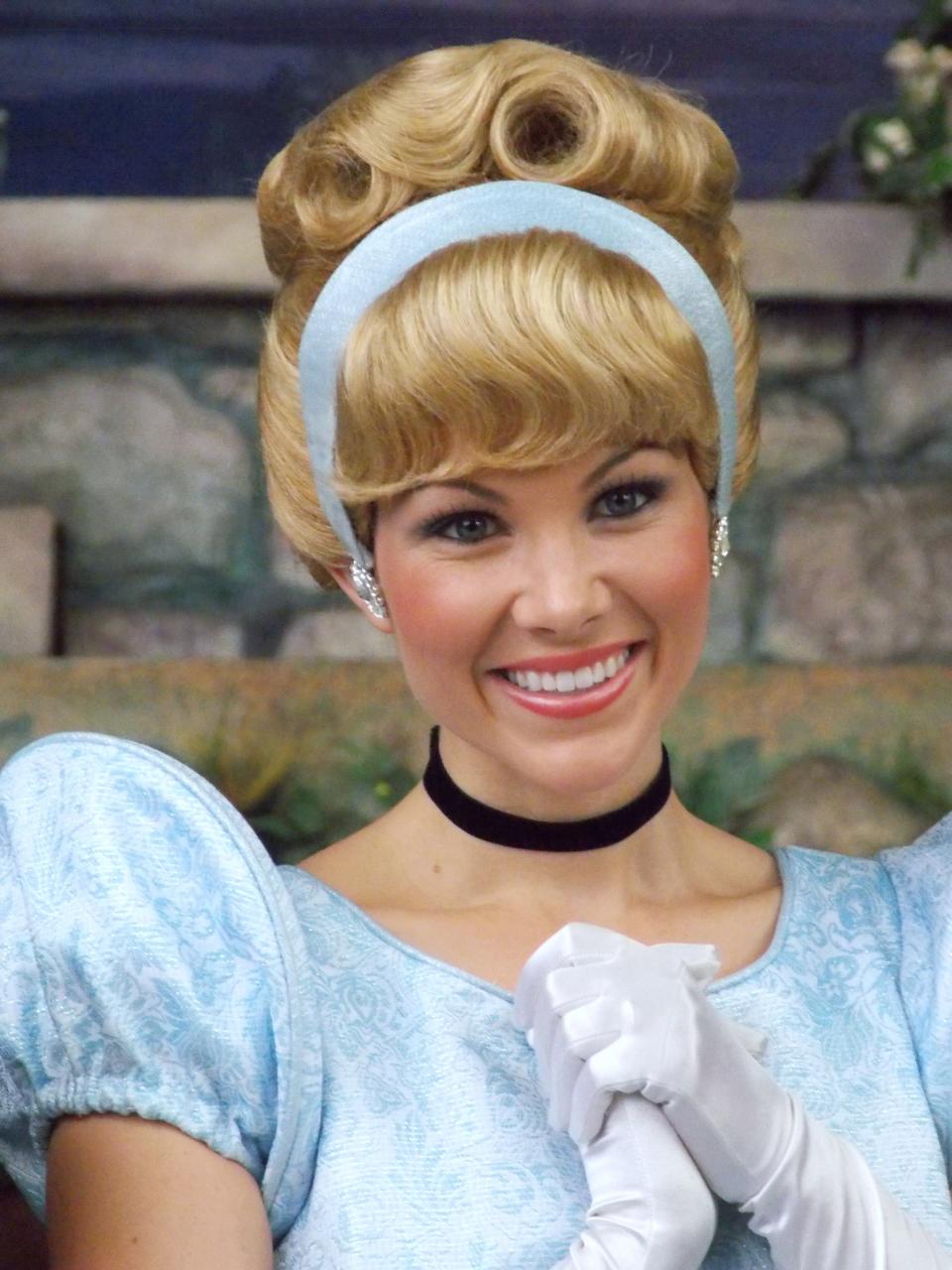
The iconic music, such as the song “Bibbidi-Bobbidi-Boo” and “A Dream is a Wish Your Heart Makes,” were on the soundtrack of this adaptation.
More than that, “Cinderella” helped make Disney financially successful. While “Snow White and the Seven Dwarfs” was successful, movies like “Fantasia” and “Pinocchio” did not make as much money, according to Decider, but “Cinderella” did much better. “The film was a hit, with critics and audiences. The film earned $8 million at the box office ($84.9 million adjusted), which is a bigger haul than the previous three Disney films combined. In its initial box office run, ‘Cinderella’ became the third biggest hit of 1950 (after ‘King Solomon’s Mines’ and ‘All About Eve’).”
Now it’s a classic movie and frequents lists of the best Disney movies of all time. It’s also not the only cinematic Cinderella adaptation.
Contemporary adaptations of Cinderella
One of the most famous adaptations was Rodgers and Hammerstein’s “Cinderella,” which came out in 1957. It was based on Perrault’s fairy tale and was broadcast on CBS as a musical written for television. The plot is familiar to those who have seen the 1950 “Cinderella,” but the music and dialogue come across as more modern.
This version spurred many more adaptations, both on the screen and on the stage. And filmmakers kept producing different versions of Cinderella. In another twist on the classic fairy tale, Blessington Film Productions released “Ella Enchanted,” which draws on the Cinderella story, but in a modern way. It’s based on Gail Levine’s book “Ella Enchanted” and stars Anne Hathaway as Ella.
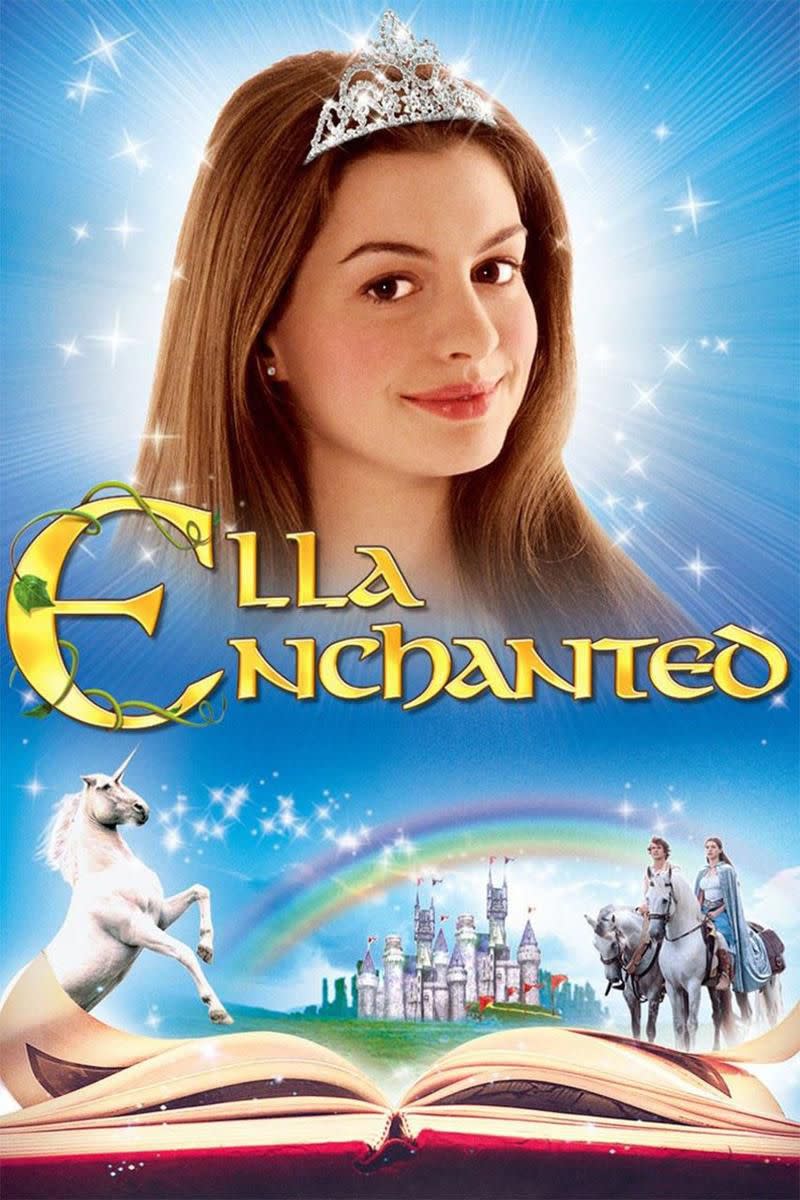
The film is more satirical than other Cinderella adaptations. There’s use of stock characters and additionally, as Hathaway said the film, “makes fun of itself for being a fairy tale.”
The music in the film includes songs like Elton John and Kiki Dee’s “Don’t Go Breaking My Heart,” with Hathaway and Jesse McCartney singing it. Rotten Tomatoes said the audience score is 57% and the critics score is 51%, which means it has mixed reviews.
The film had a budget of $31 million and only made $27 million at the box office, according to Box Office Mojo.
There were other adaptations like “A Cinderella Story,” starring Hilary Duff, or “Ever After” with Drew Barrymore. Then, Disney decided to remake the film “Cinderella” in the modern age.
Starring Lily James and Cate Blanchett, “Cinderella” took the audience’s breath away by the attention to detail in the costuming and set, as well as making Cinderella a more interesting character. Her backstory with her mother is revealed and she has a mantra — “Have courage and be kind.”
The film follows the 1950 version fairly closely, but there are some twists.
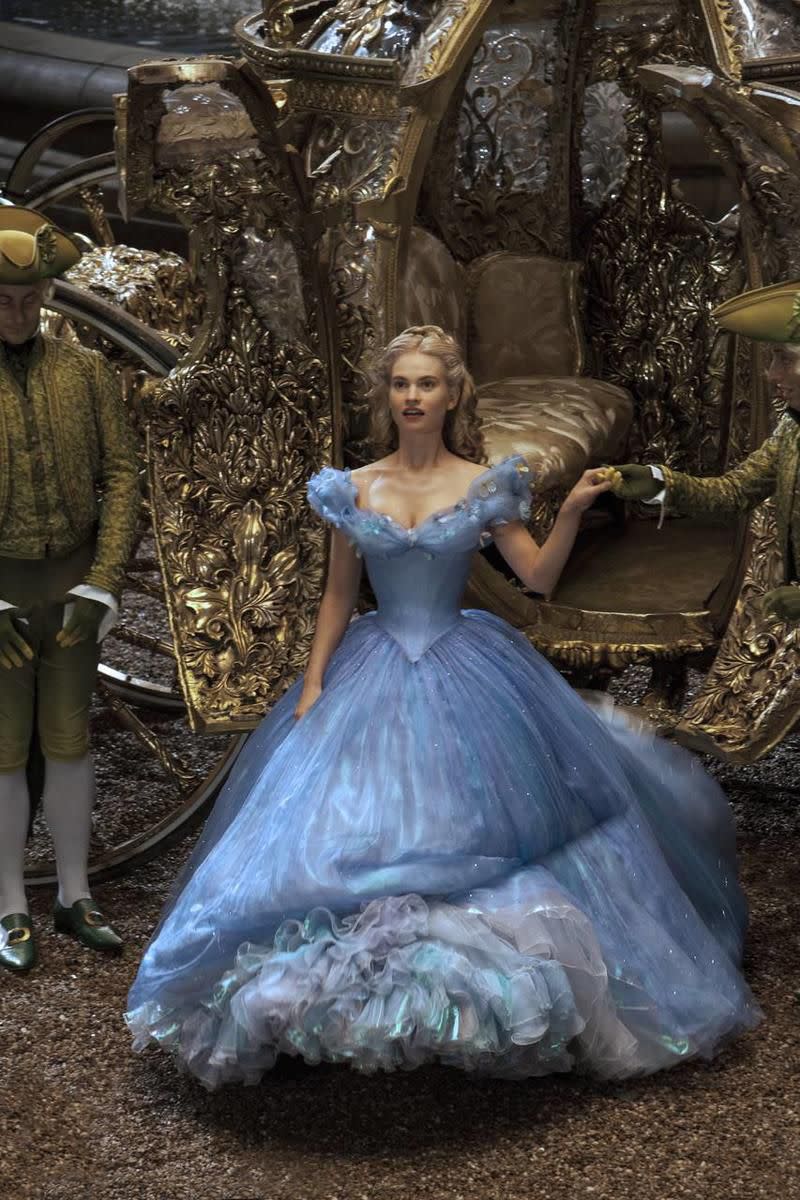
For one, the prince, Kit, and Cinderella spend more time getting to know each other before they fall in love with one another. For another, Cinderella’s own character is developed further — the difficulty behind her struggles to remain good while she experiences so much cruelty is a central part of her character.
The love story between Kit and Cinderella also changes slightly.
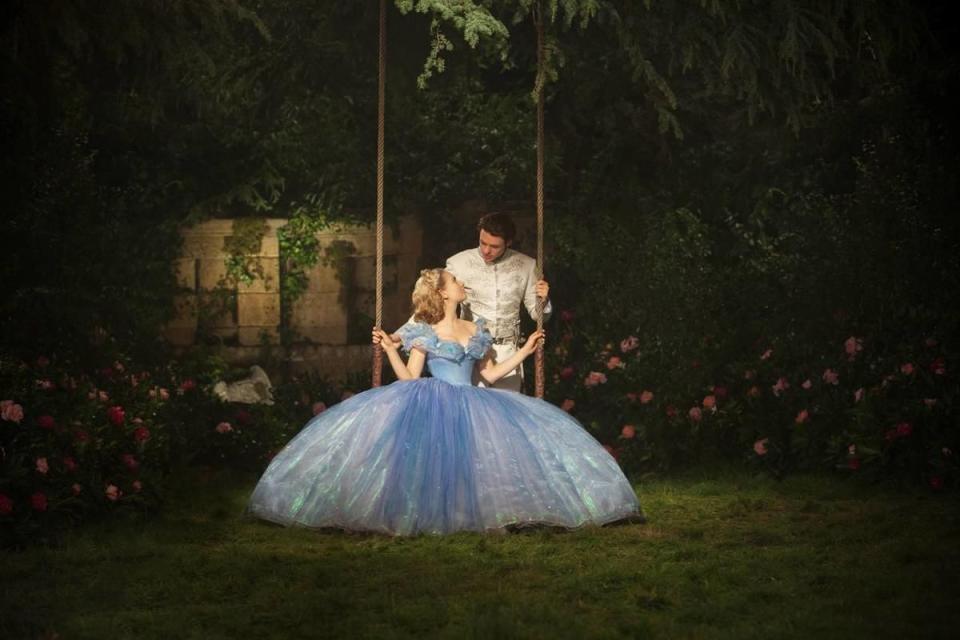
While earlier versions of the story show them falling in love abruptly without much time to get to know each other, that time is extended in the live-action version of the film. In the scene where Cinderella is going to try on the glass slipper, which Kit brings from house to house to all the women in the land, the two share an intimate moment where they recall an early conversation of theirs.
This moment works as a way to show their closeness and bond they cultivated. And like all fairy tales, the story ends happily ever after.
The future of Cinderella
Earlier this month, it was reported Andrew Lloyd Webber’s musical “Bad Cinderella” will be closing on Broadway on June 4. The show is a feminist retelling of Cinderella. While there are some common elements like crystal slippers and the stepmother, Cinderella is goth and the music is more contemporary, according to Variety,
The play had mixed reviews. Variety reported, “It’s been a rough go for ‘Bad Cinderella,’ which suffered from bad reviews and lackluster ticket sales. It was also snubbed at the Tonys, failing to receive a single nomination. By the time the curtain comes down for good, ‘Bad Cinderella’ will have played 33 preview performances and 85 regular performances.”
Cinderella fans won’t have to wait long to see another Cinderella appearance.
Of course, there’s always Halloween where girls still dress up as Cinderella. Princesses are regularly one of the most popular Halloween costumes, according to Rent.com, and Cinderella is a popular choice.
There’s also another show where Cinderella might make a cameo.
Disney+ is coming out with a “Descendants” sequel, previously entitled “The Pocket Watch” but now known as “Descendants: The Rise of the Red.” Production for this film was underway in February 2023 and the daughter of Cinderella and Prince Charming will be part of the story, per Deadline.
Cinderella will be part of the story, too, Variety confirmed. The singer Brandy will play Cinderella — she’s done it before in the 1997 “Rodgers & Hammerstein’s Cinderella.” There may be other Cinderella adaptations in the future and one thing’s for certain — she’ll live happily ever after.

